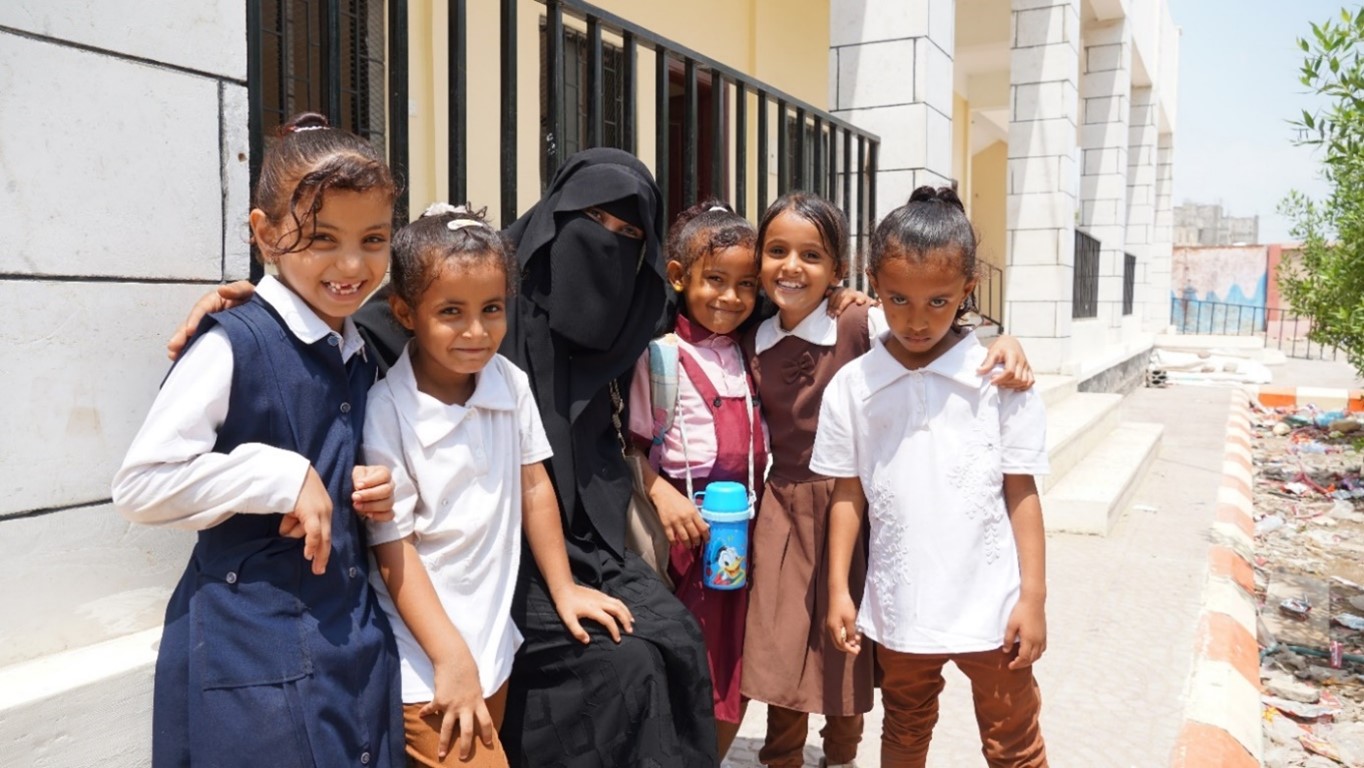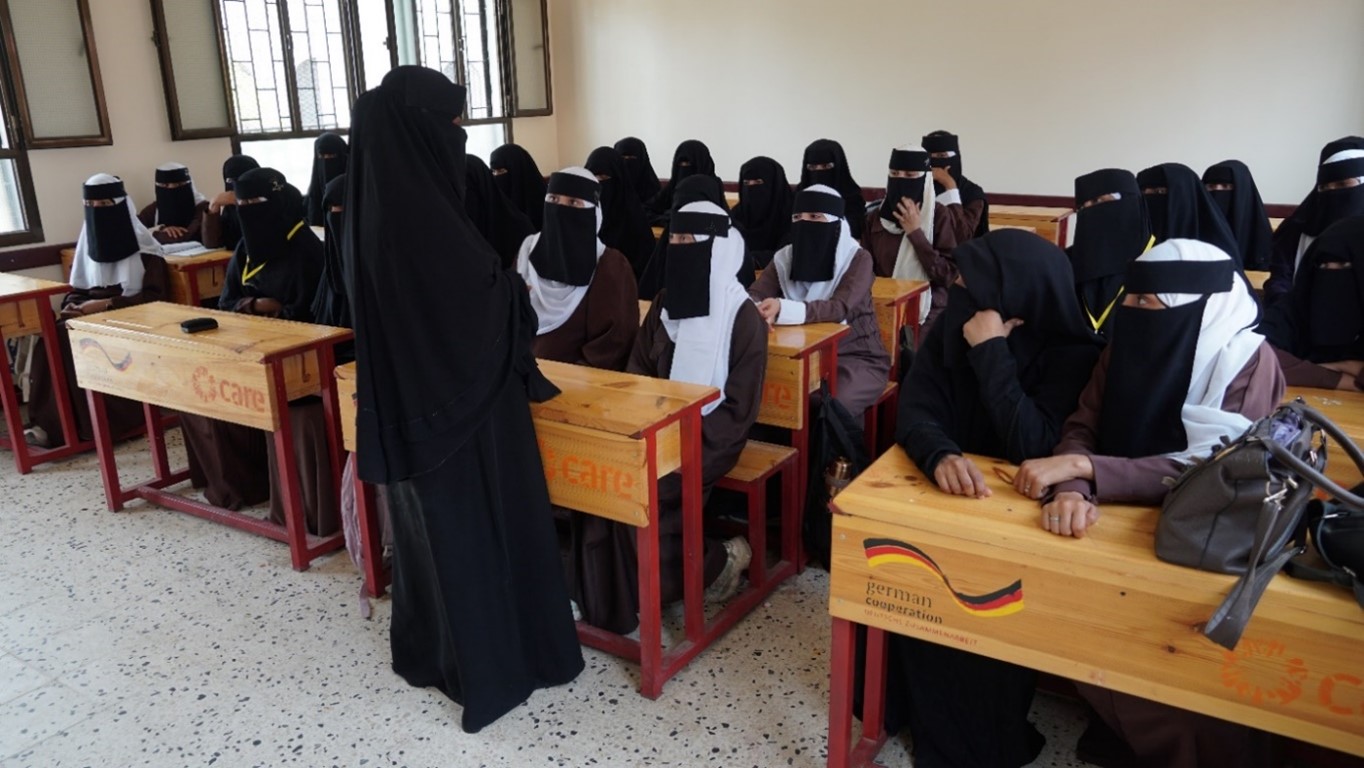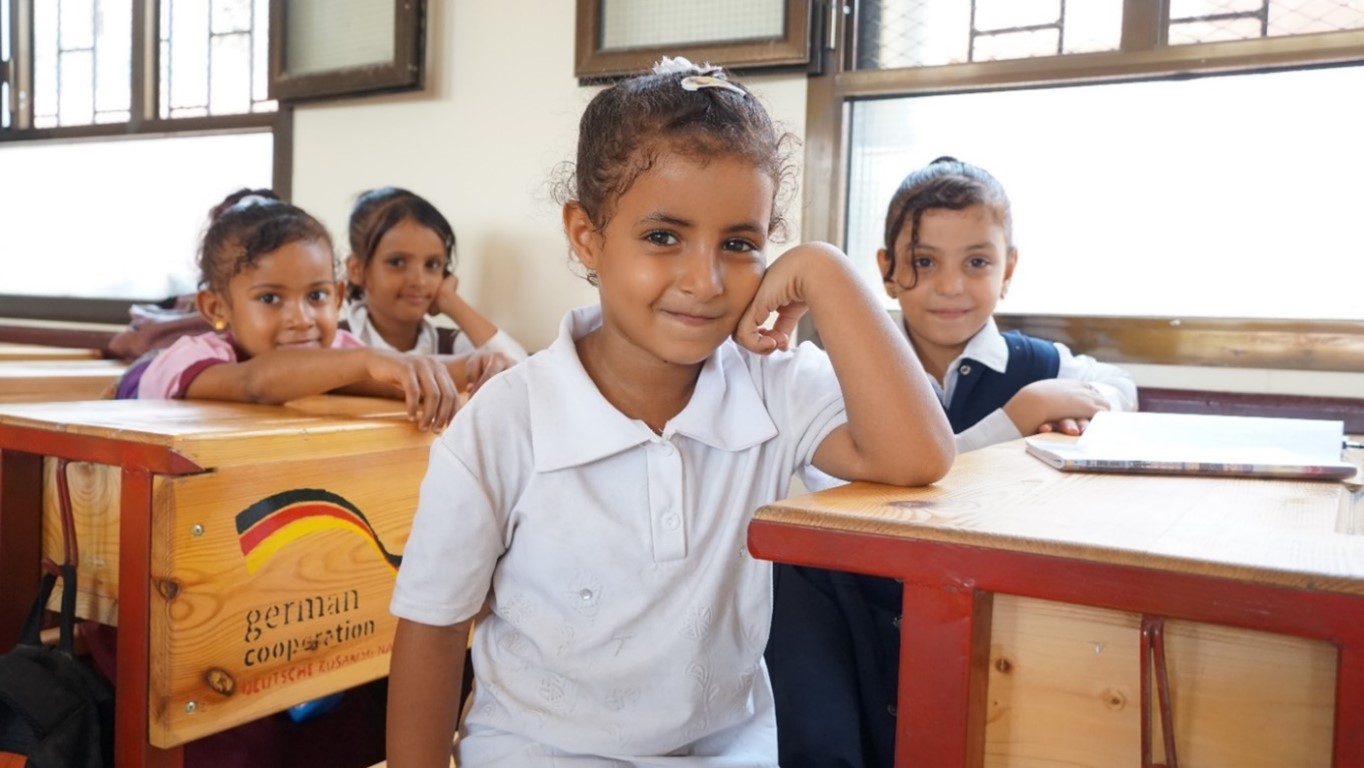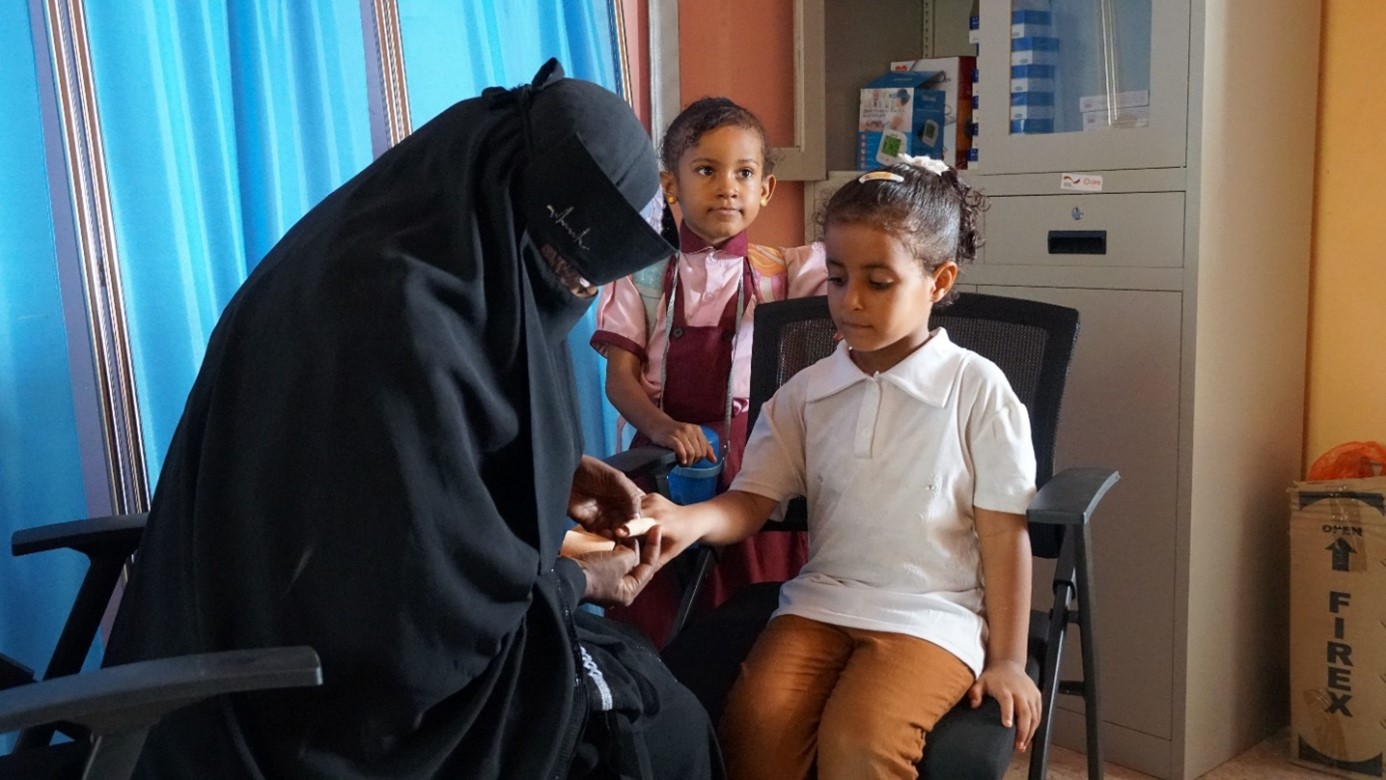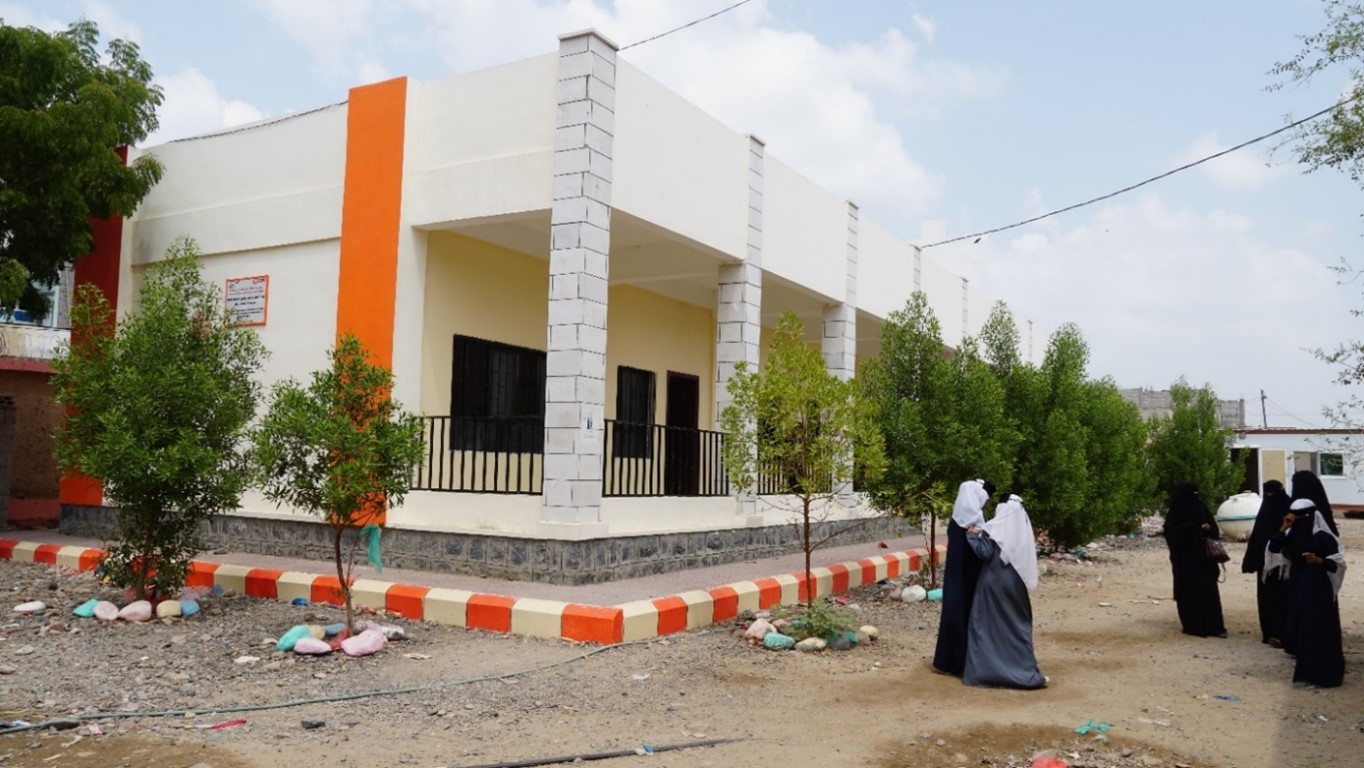In Yemen, over 2.7 million school-aged girls and boys are out of school, and many of the 1.5 million displaced children in the country have had their education suddenly cut due to multiple displacements. Girls and boys in areas of high displacement are forced to cope with overcrowded classrooms and overburdened and unequipped teachers.
Despite the protracted conflict and disruption of education in Yemen, Rema* is one of many Yemeni teachers and educators who continue to pursue their mission of educating future generations. She teaches at Fowz* School for Girls in Lahj Governorate. She has also dedicated herself to educating the displaced and the most vulnerable children for many years.
“Teachers work in difficult conditions, with insufficient classrooms, furniture, and educational materials. We tried to maintain what we could of the furniture in school using our own money and sometimes the donations provided to support our school and purchase supplies,” says Rema.

